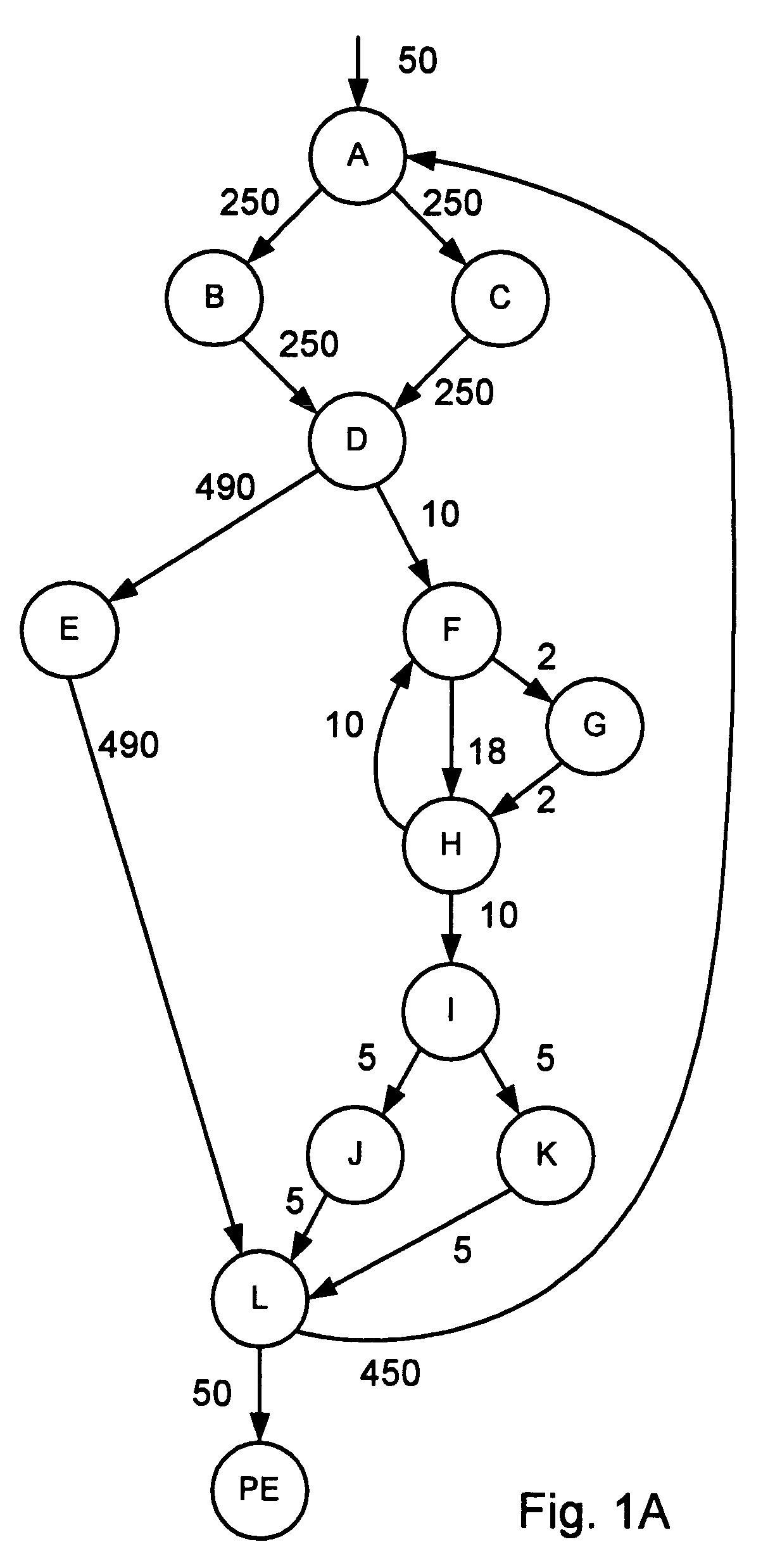Unrolling loops with partial hot traces
a loop and hot tracing technology, applied in the field of compilers, can solve the problems of increasing the complexity of modern software, and the significant influence of the execution time of the computer program, and achieve the effect of high probability
- Summary
- Abstract
- Description
- Claims
- Application Information
AI Technical Summary
Benefits of technology
Problems solved by technology
Method used
Image
Examples
Embodiment Construction
[0027]The present invention provides for loop unrolling for a class of loops that have not previously been unrolled. This class of loops comprises loops that are too large to be completely unrolled, and which lack a single hot trace that covers an entire loop iteration.
[0028]Turning now to FIG. 1A, a loop comprising blocks A–L is shown. Block PE is simply a loop post exit block. Profiling has been performed to determine likelihood (probabilities) of transition from one block to another, expressed as number of times the transition occurred. For example, the profiler determined that 50 transitions into the loop occurred during the period profiled. There were 250 transitions from block A to block B; 250 transitions from block A to block C. Other transition frequencies are shown next to the corresponding transition arrows. Prior compiler techniques have identified a hot trace through a loop and unrolled the trace to provide faster-running code. That is, if a sequence of blocks from a be...
PUM
 Login to View More
Login to View More Abstract
Description
Claims
Application Information
 Login to View More
Login to View More - R&D
- Intellectual Property
- Life Sciences
- Materials
- Tech Scout
- Unparalleled Data Quality
- Higher Quality Content
- 60% Fewer Hallucinations
Browse by: Latest US Patents, China's latest patents, Technical Efficacy Thesaurus, Application Domain, Technology Topic, Popular Technical Reports.
© 2025 PatSnap. All rights reserved.Legal|Privacy policy|Modern Slavery Act Transparency Statement|Sitemap|About US| Contact US: help@patsnap.com



